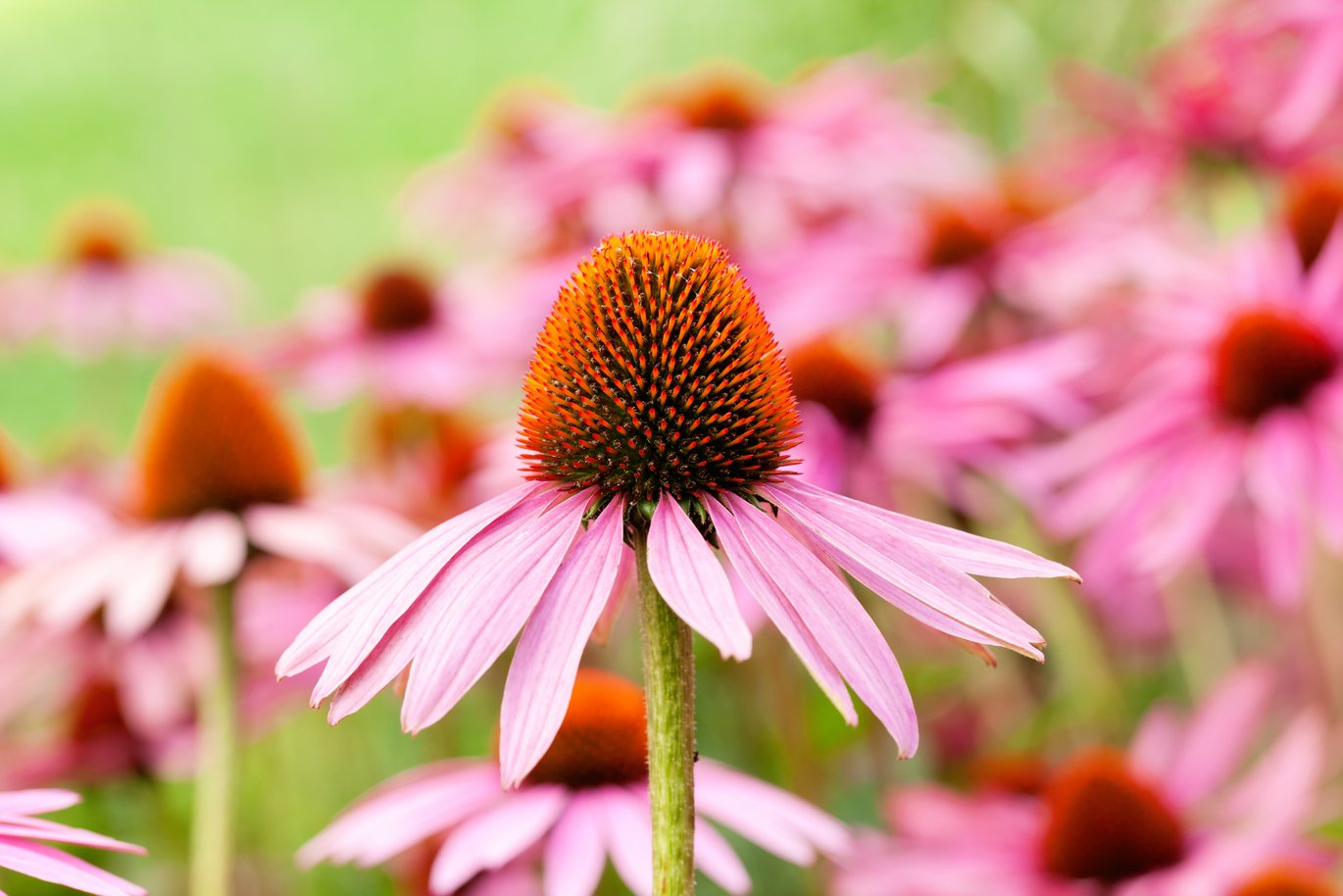Making a good plant even better
Scientists from Aarhus University have discovered a number of ways in which you can extract even more assets from the useful and decorative purple coneflower.

It looks so lovely with its colourful flowers, but the popular purple coneflower does more than just look decorative in gardens and in the wild. Echinacea, which is its Latin name, is also known for its medicinal properties.
The challenge is to obtain the full benefit and yield of the plant. A PhD thesis from Aarhus University shows good news in this area. There are apparently several handles that you can tweak to increase the yield of the bioactive ingredients in the coneflower.
In North America, the coneflower is prolific in the wild. Different parts of the plant have for centuries been used by Native Americans to strengthen the immune system and to treat a number of infectious diseases such as the common cold and influenza. Nowadays purple coneflower is a popular constituent in herbal remedies in Europe and North America, and its popularity is also growing in Australia, Asia, South America and North Africa.
- Because of the increasing demand it would be interesting to see if we can increase the yield of these therapeutic components in the cultivated coneflower, says PhD student Maria Obel Thomsen from Aarhus University. She has studied different cultivation strategies for the plant and also the effect of stress levels on the concentration of the bioactive ingredients of interest in this connection, which are alkamides and derivatives of caffeic acid.
Cultivation stategies
When Maria Obel Thomsen studied the effect of different cultivation systems, she approached it from four different angles. She looked into:
- the genetic background of Echinacea species
- the developmental stage of the plant at harvest
- harvesting strategies for above-ground parts and for roots
- nitrogen supply
It turned out that virtually all these factors to some extent affected the yield of the bioactive ingredients in purple coneflower
- Echinacea is not merely Echinacea! The three species that are of medicinal importance – in other words E. purpurea, E. pallida and E. angustifolia – have very different chemical profiles. It is therefore important to grow the species that has the largest concentration of the bioactive ingredient you wish to use, says Maria Obel Thomsen.
The bioactive concentration in the plants was primarily affected by: species, plant parts used, and combinations of seed populations (species) grown under the same conditions. The harvesting time in relation to plant age and time of year also has an effect, as does nitrogen supply.
- To get a high yield of bioactive ingredients you need to harvest the above-ground parts of E. purpurea at the late flowering stage in the first three to four years of cultivation. Fertilisation with nitrogen increases the biomass yield and the alkamide concentration in the above-ground parts of the plant, says Maria Obel Thomsen. The roots – which have the highest alkamide concentrations – are harvested in the third or fourth year of cultivation, and preferably early in the year, in contrast to what has previously been recommended.
The effects of stress were also studied. The plants were exposed to different substances – here hydrogen peroxide, salicylic acid and a salt solution – that have been shown to have an effect in other plants. The stress did not generally result in a higher concentration of bioactive ingredients, except for hydrogen peroxide (gave a higher concentration of caffeic acid in the flowers), and salt (gave a higher concentration of alkamides and caffeic acid).
The PhD project was part of a larger project financed by The Danish Council for Strategic Research.
You can read one of the scientific articles here:
Thomsen, MO, Fretté, X, Christensen, KB, Christensen, LP & Grevsen, K. 2012. Seasonal variations in the concentrations of lipophilic compounds and phenolic acids in the roots of Echinacea purpurea and Echinacea pallida, Journal of Agricultural and Food Chemistry, vol. 60, no. 49, p. 12131–12141.
For further information please contact: Senior scientist Kai Grevsen (supervisor), Department of Food Science, telephone: +45 8715 8342, e-mail: kai.grevsen@agrsci.dk
